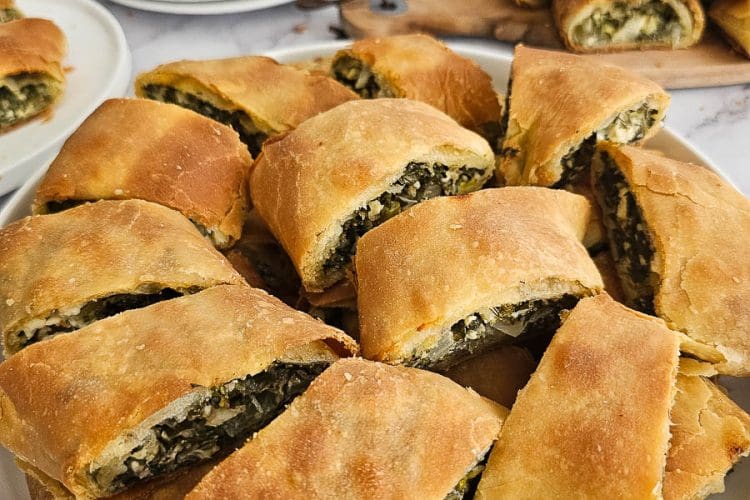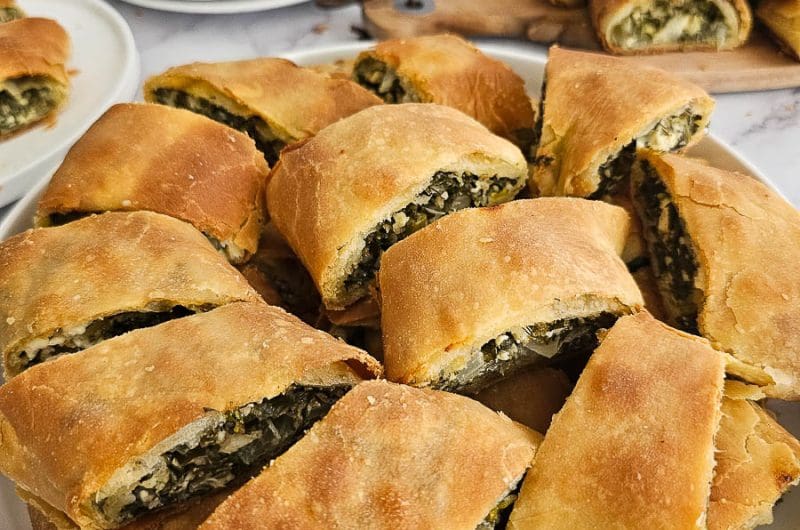If you have ever been reluctant to make your own dough for Spanakopita, then this is the perfect recipe to start with. No yeast and just five ingredients. Filled with a delicious spinach and feta filling and then baked until crispy and flaky. It doesn’t get better than this!
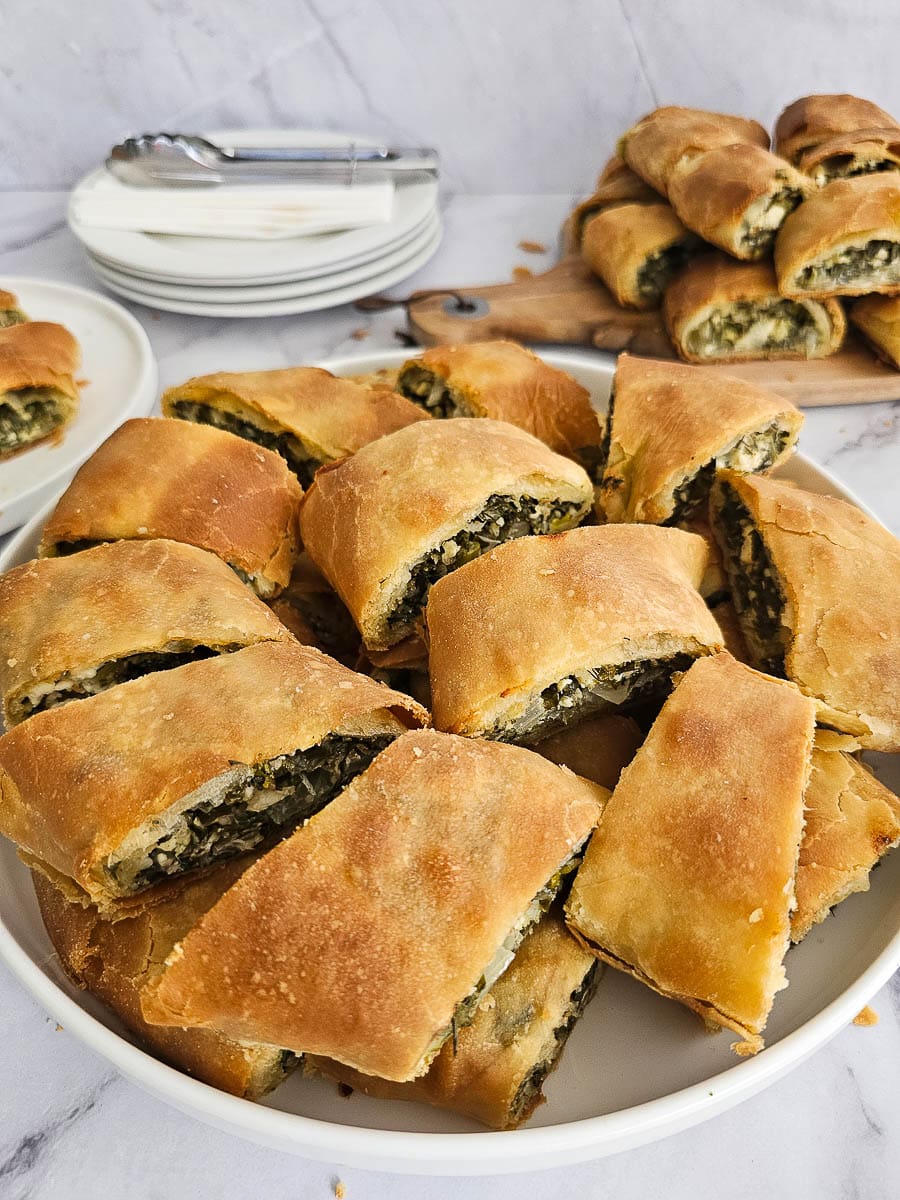
When Greeks get together for special occasions, each family brings a plate of food and everyone is known for their specialty dish. My mum is known for her Spanakopita – our family get-togethers just wouldn’t be the same without it! It is tasty, crispy and best of all, can be eaten with your hands as it doesn’t fall apart.
This Spanakopita requires no cooking of the ingredients, making it convenient and straightforward to assemble. My mum uses a combination of English spinach and silverbeet but sometimes substitutes whatever greens she has in the garden. Growing up in a small village, my dad recalls his mother foraging for greens to use in her Spanakopita. Most of the time, she made it without cheese, only adding a small amount when it was available. In my family, there is much debate over how much cheese to add; some prefer it with lots of cheese, while others like very little. Feel free to adjust the amount of cheese to your liking.
I must admit, the ingredients for the Spanakopita filling take time to chop, but you can prepare it while your dough is resting. Don’t skip this step, as letting the dough rest makes it much easier to roll out and less likely to break apart.
There are different ways to shape Spanakopita. This recipe is made by rolling the pastry into a rectangle and then placing the filling along one long end and rolling the Spanakopita into a log. It’s a great hand-held option for entertaining. You can use the same filling and pastry recipe to make a pie (my aunt’s specialty) or even a stovetop gozleme version (I will post these versions soon). All methods are equally delicious!
Spanakopita (Greek Spinach and Feta Pie) Ingredients
For the Spanakopita pastry
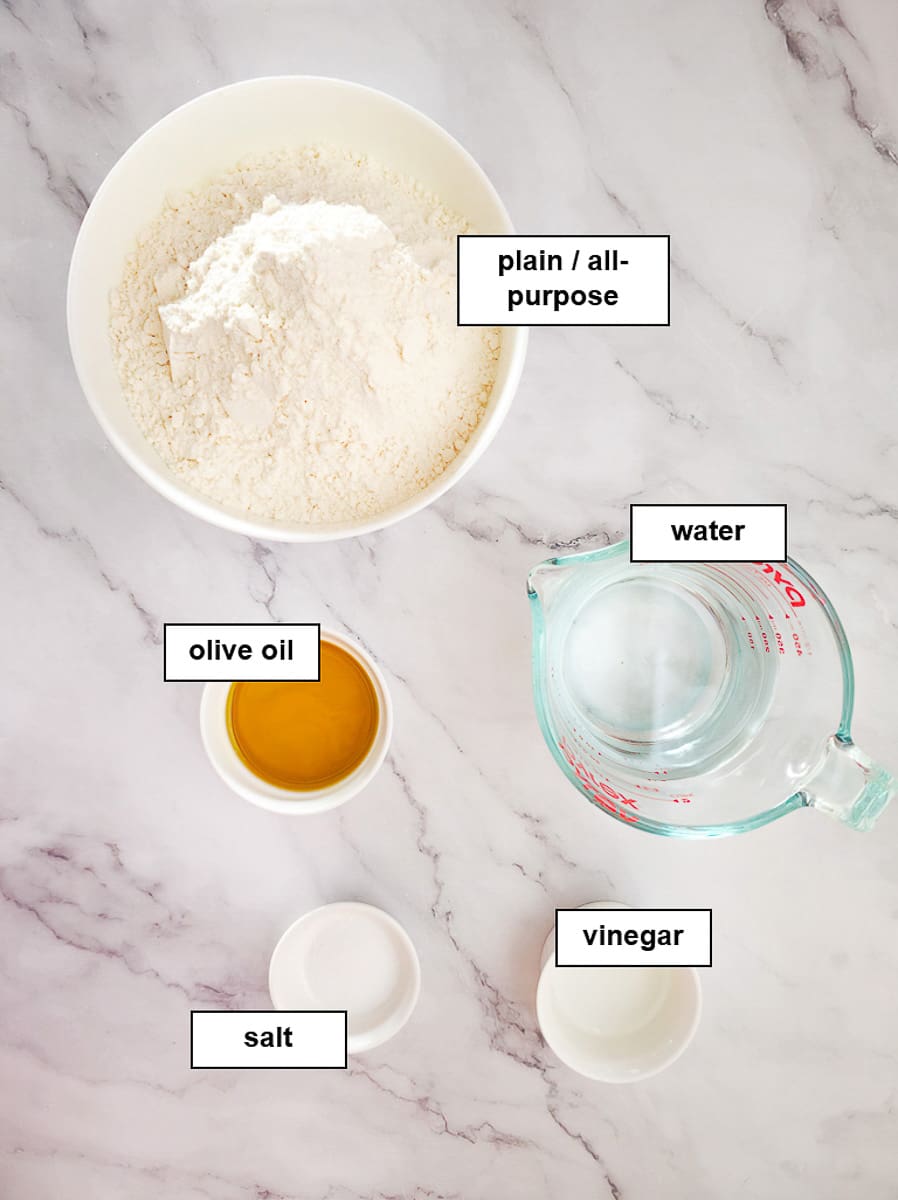
Plain flour / All-purpose flour: Regular plain / all-purpose flour works perfectly well; there’s no need for the specific 00 variety.
Lukewarm water: Results in a dough that is easier to work with and yields a lighter, more tender pastry.
Olive oil: Gives the pastry a nice flaky texture. As always, only use extra virgin olive oil.
Vinegar: Helps to tenderise the dough, making it easier to roll out. Vinegar also helps to create a lighter, flakier texture.
For the Spanakopita filling
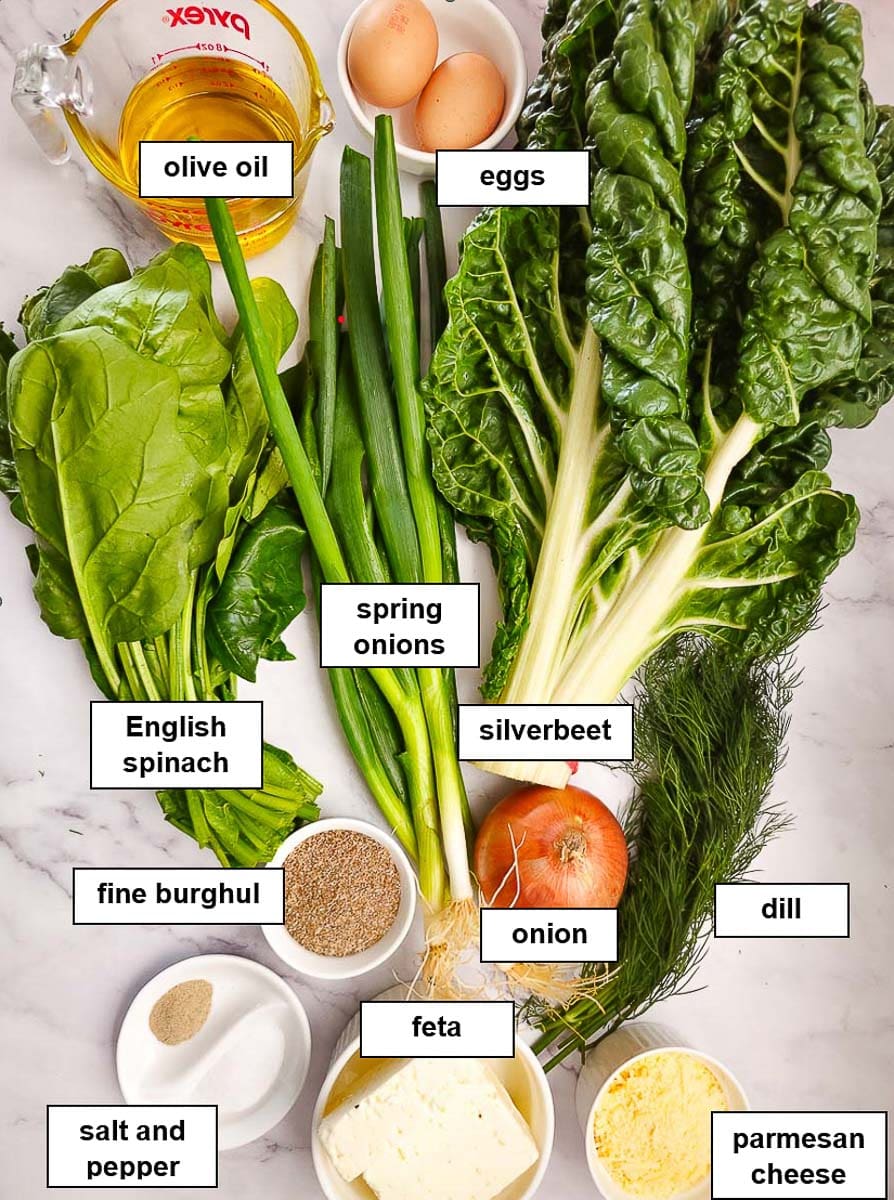
Spinach/Greens: My mum uses a combination of silverbeet (Swiss chard), for its slightly earthy flavour, and English spinach, for its slightly sweet taste, but you can use whatever combination of spinach and greens you prefer. As this filling is not cooked, it is best not to use frozen spinach, as it has a slightly softer texture.
Olive oil: Don’t skimp on this and use as much as is suggested in the recipe. As always, only use extra virgin olive oil.
Onion: Adds a mild sweetness to the filling that complements the spinach.
Spring onions / Scallions: Offer a milder onion flavour and add a fresh taste to the filling.
Dill: Dill complements the spinach beautifully and enhances the overall aroma and taste of the Spanakopita.
Feta cheese: Provides a salty and tangy kick to the Spanakopita. Add as much or as little as you like.
Parmesan cheese: My mum also adds a small amount of Parmesan cheese to the filling. You can substitute with kefalotyri cheese or leave it out if you prefer.
Eggs: Acts as a binder, helping to hold the filling together when the Spanakopita is baked.
Fine burghul: Soaks up the moisture from the spinach, resulting in a crispier Spanakopita. If you leave this out, make sure you strain your spinach well to remove excess moisture.
Health benefits of Spanakopita (Greek Spinach and Feta Pie)
Spinach, a key ingredient in Spanakopita, is a rich source of vitamins A, C, and K, as well as minerals like iron and calcium. These nutrients support various bodily functions, including immune health, vision, bone strength, and blood clotting. Silverbeet, also a key ingredient, is rich in vitamins A, C and K, supports bone health, aids blood sugar control, and promotes digestive and heart health with its high fibre content. Olive oil is a staple of Mediterranean cuisine and is renowned for its heart-healthy monounsaturated fats and antioxidants. Consuming olive oil in moderation may help lower cholesterol levels, reduce inflammation, and protect against heart disease and stroke. Feta cheese provides protein, calcium and probiotics, which are beneficial for bone health, muscle repair and gut health. Additionally, feta cheese is lower in lactose compared to other dairy products, making it easier to digest for some individuals.
How to make Spanakopita (Greek Spinach and Feta Pie)
To make the Spanakopita pastry
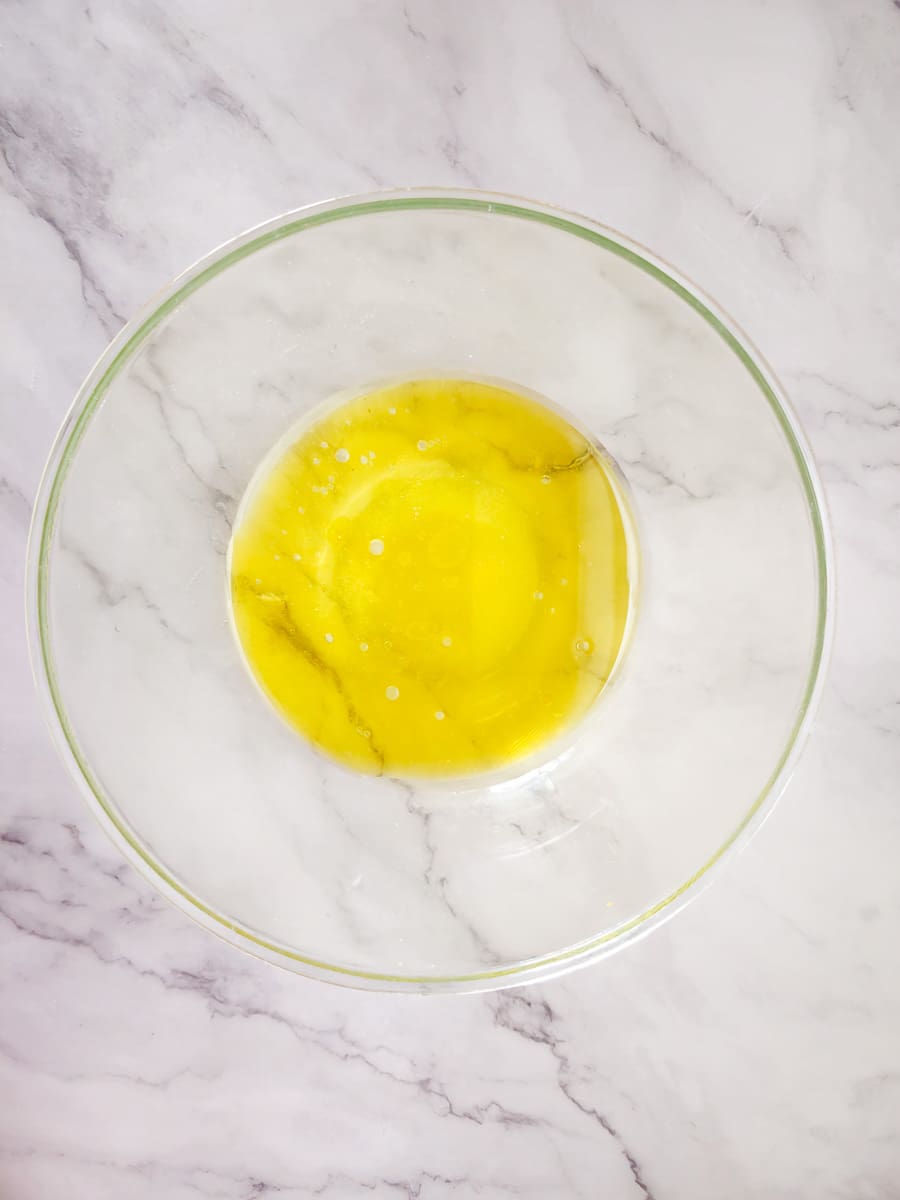
1. Place warm water in a large bowl. Add olive oil, vinegar and salt.
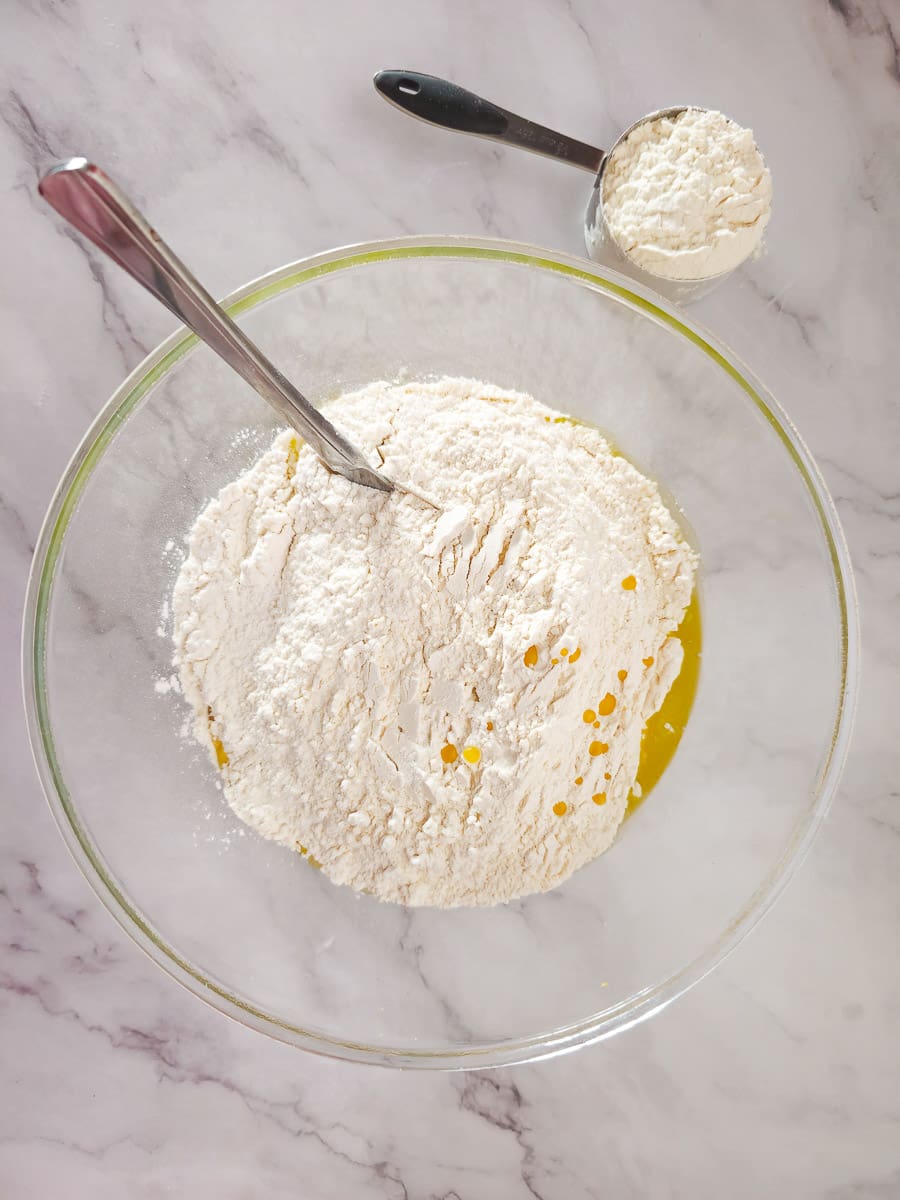
2. Add flour.
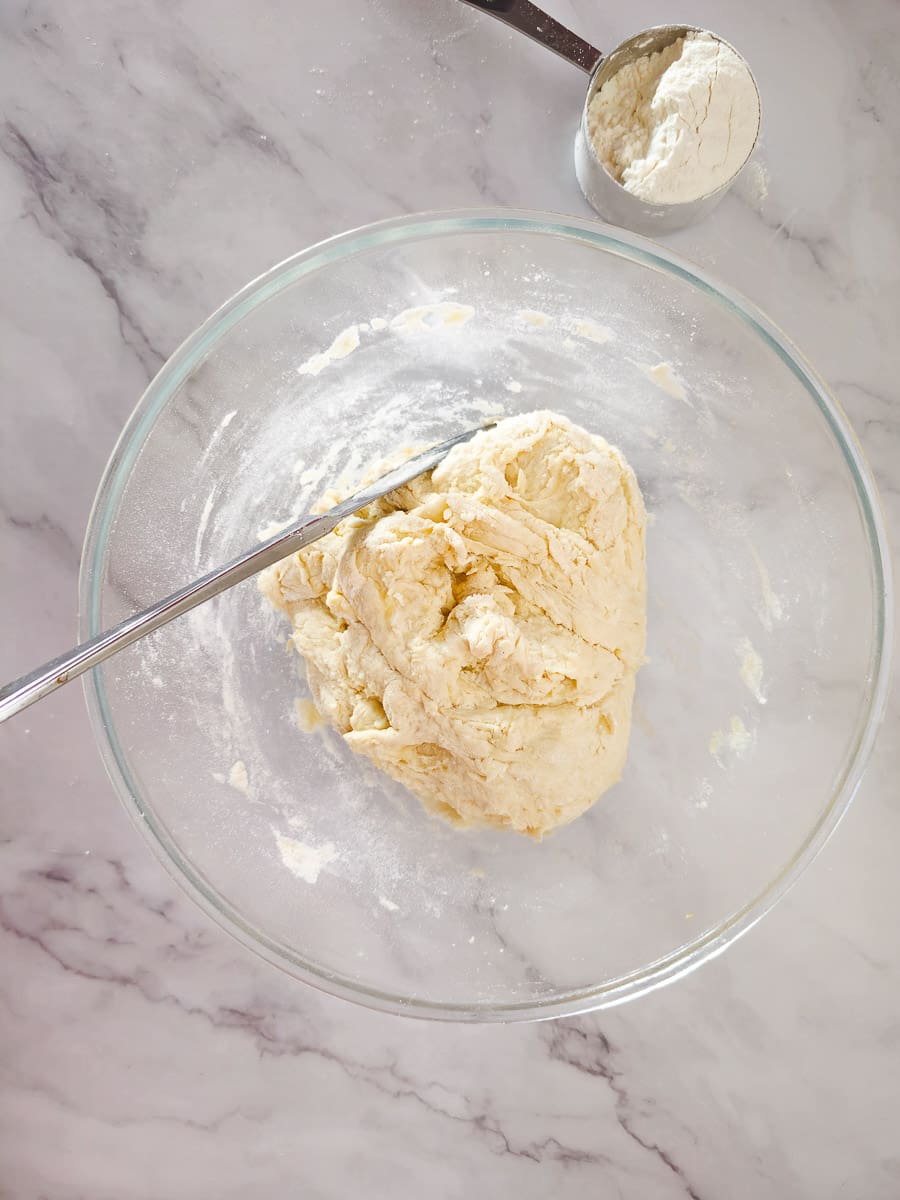
3. Bring the dough together using a bread/butter knife.
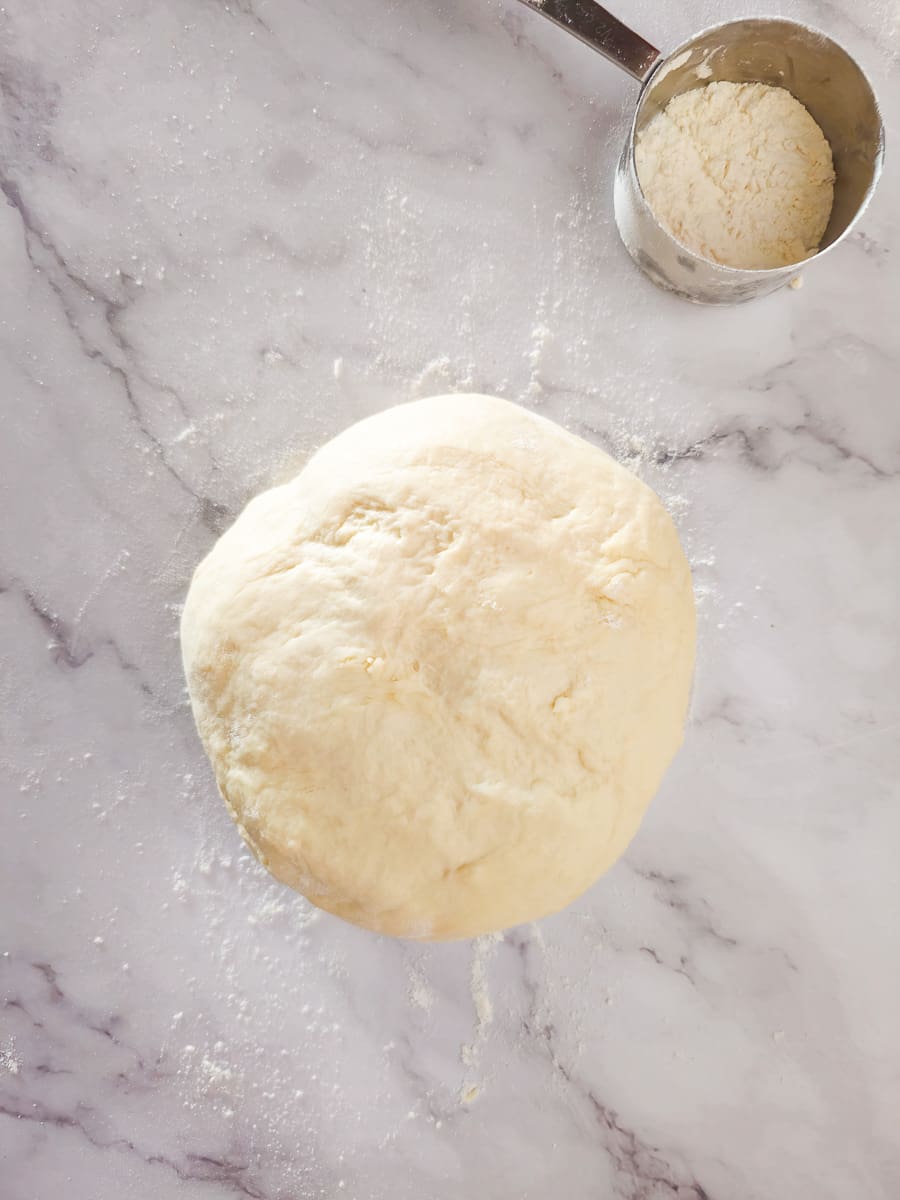
4. Transfer dough onto a lightly floured surface. Hand knead for about 5-6 minutes.
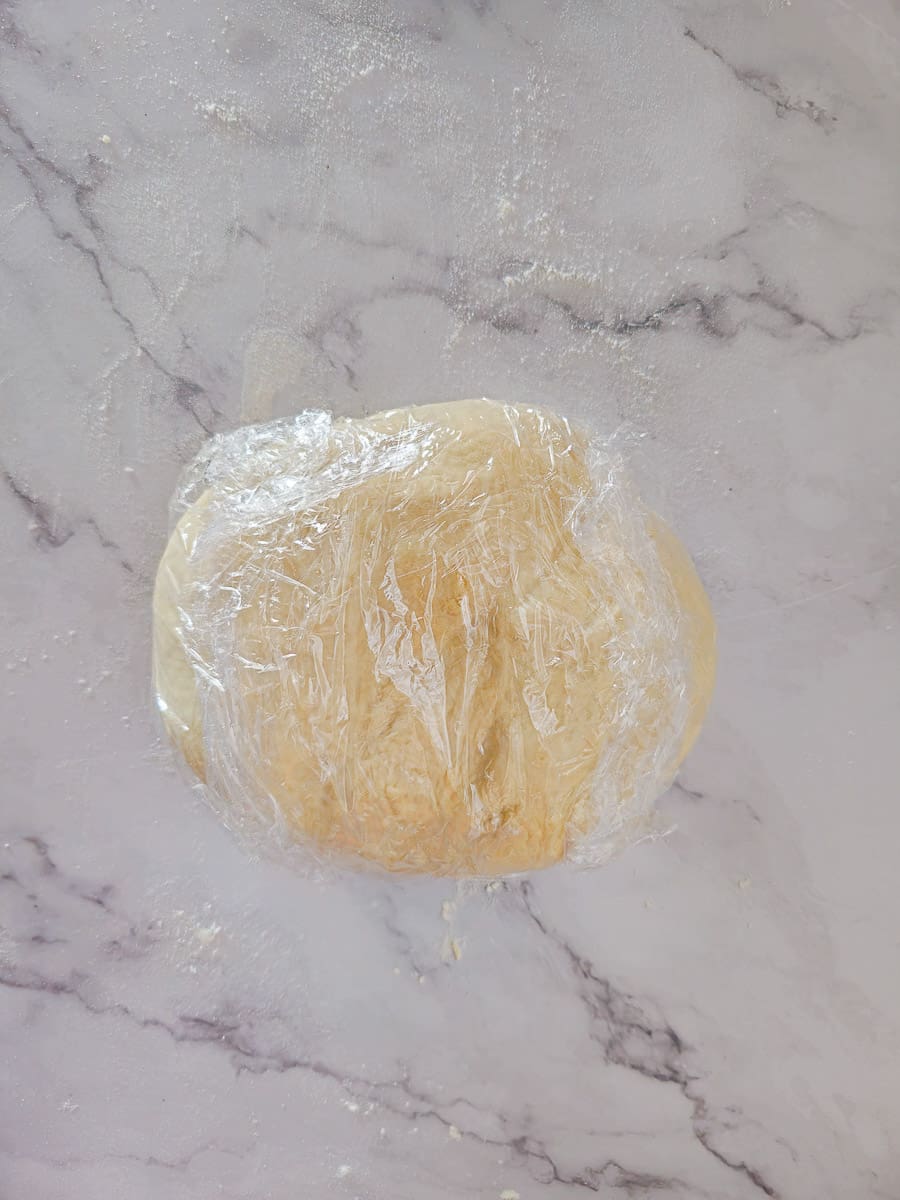
5. Wrap dough in cling wrap and let the dough rest for 1-2 hours at room temperature.
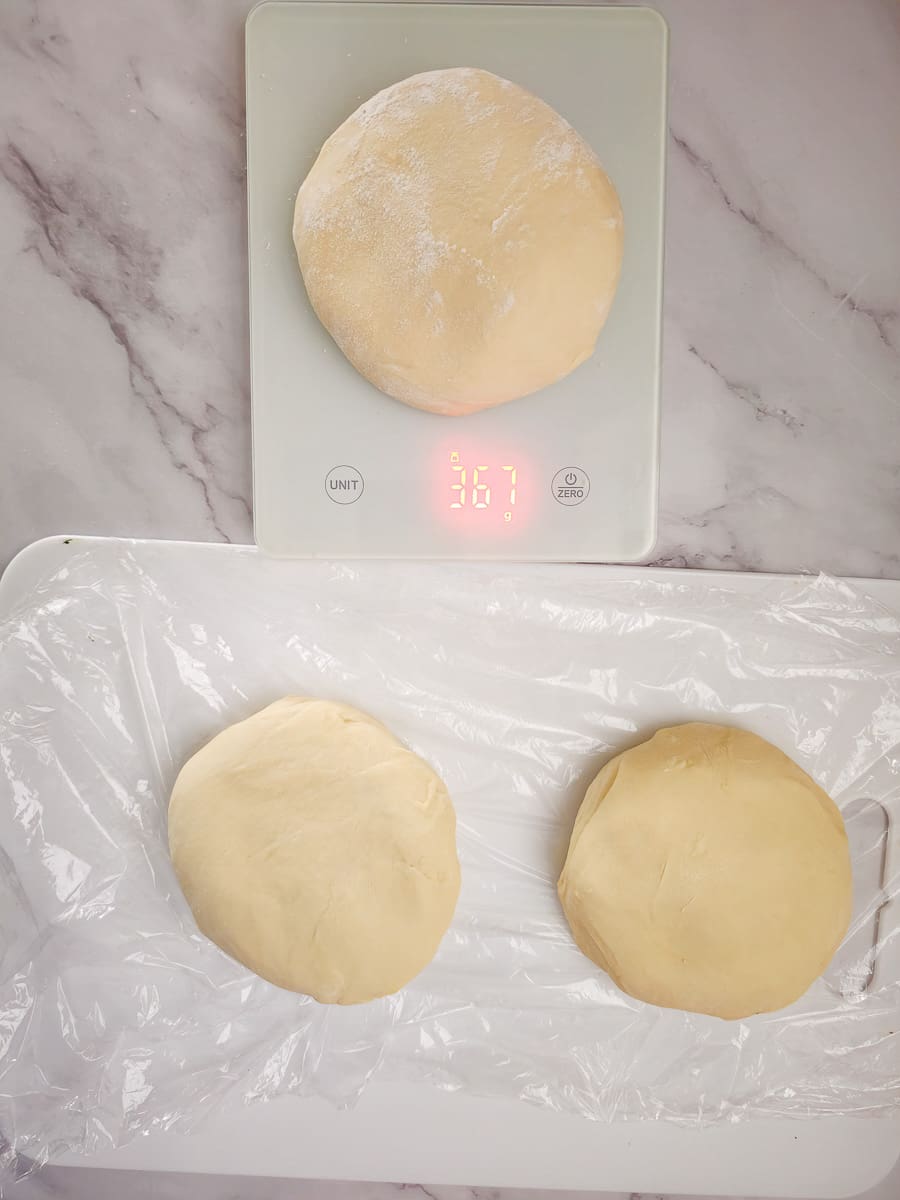
6. Divide pastry into 3 balls.
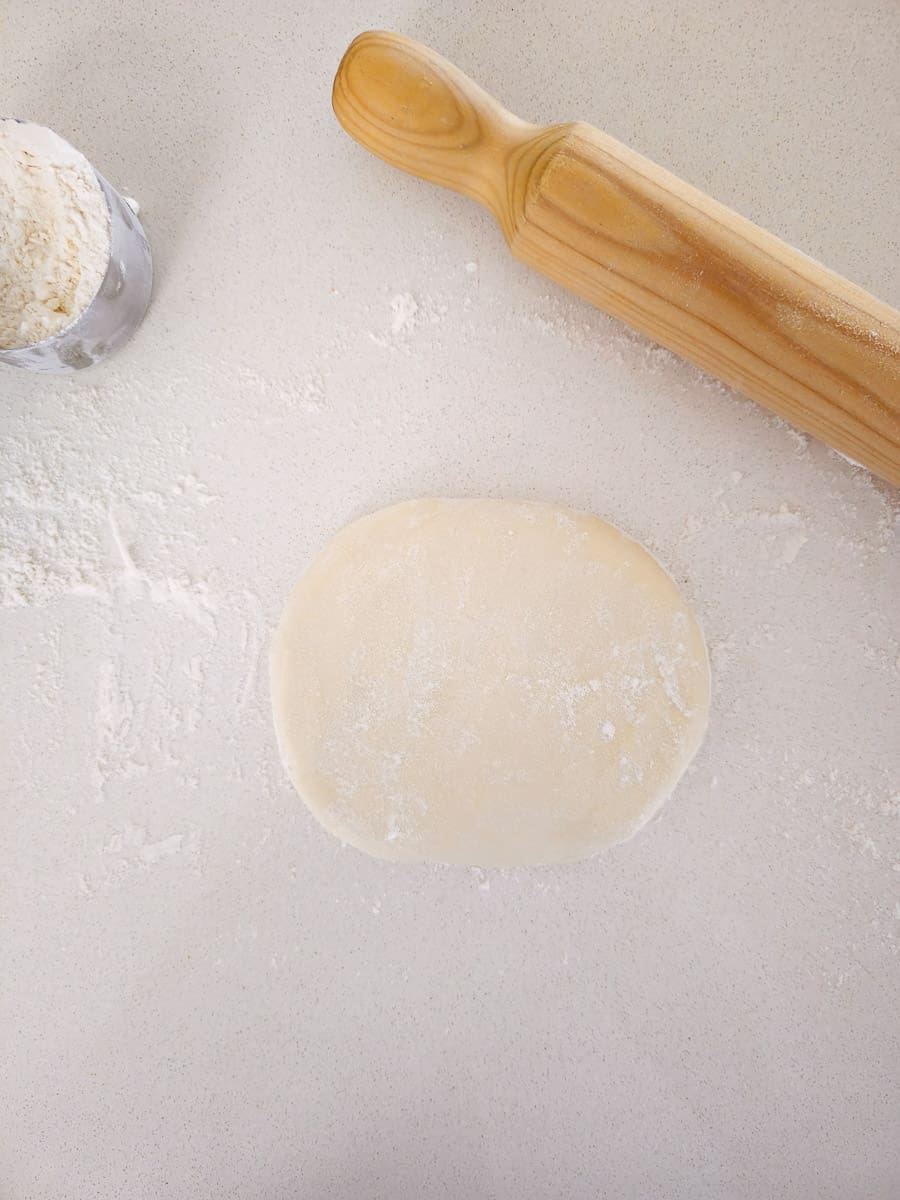
7. As you roll out your pastry, add a small amount of flour on the bench and on top of the pastry to prevent the dough from sticking.

8. Continue rolling out pastry into a rectangular shape.
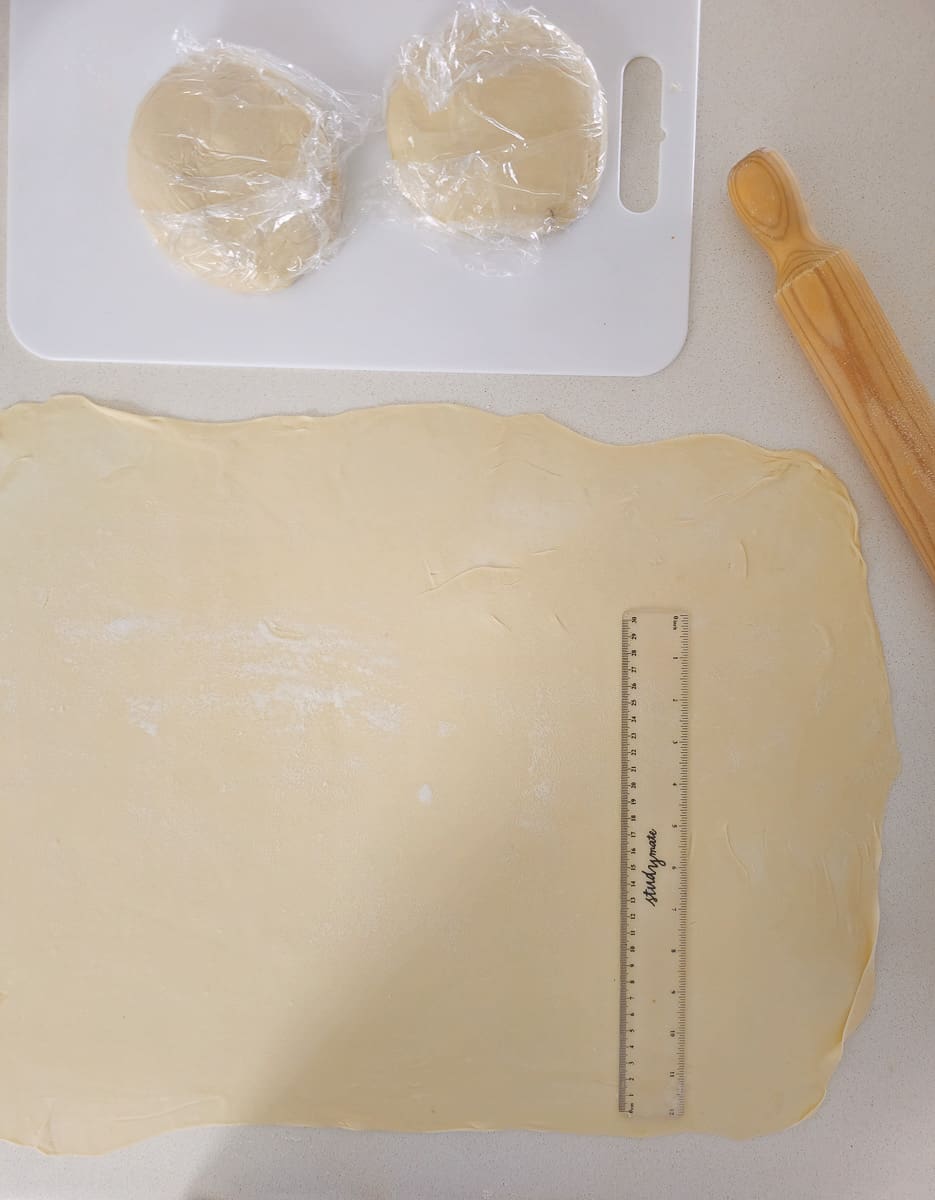
9. Roll out to approximately 40cm x 60cm / 15.75 inches x 23.62 inches.
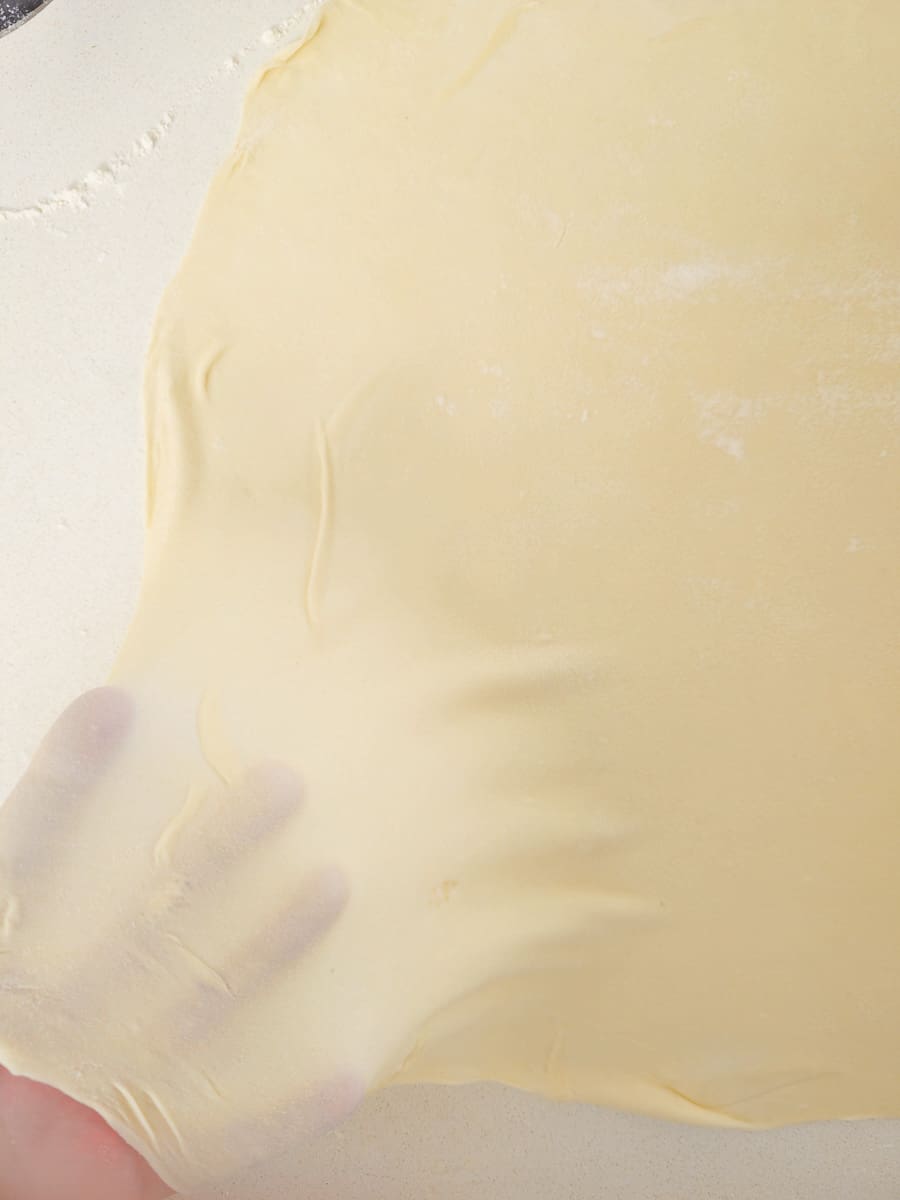
10. Aim for paper-thin thickness.
To make the Spanakopita filling

1. Cut and discard the tougher white ends of the silverbeet. Finely shred the remaining white stalks and leaves.
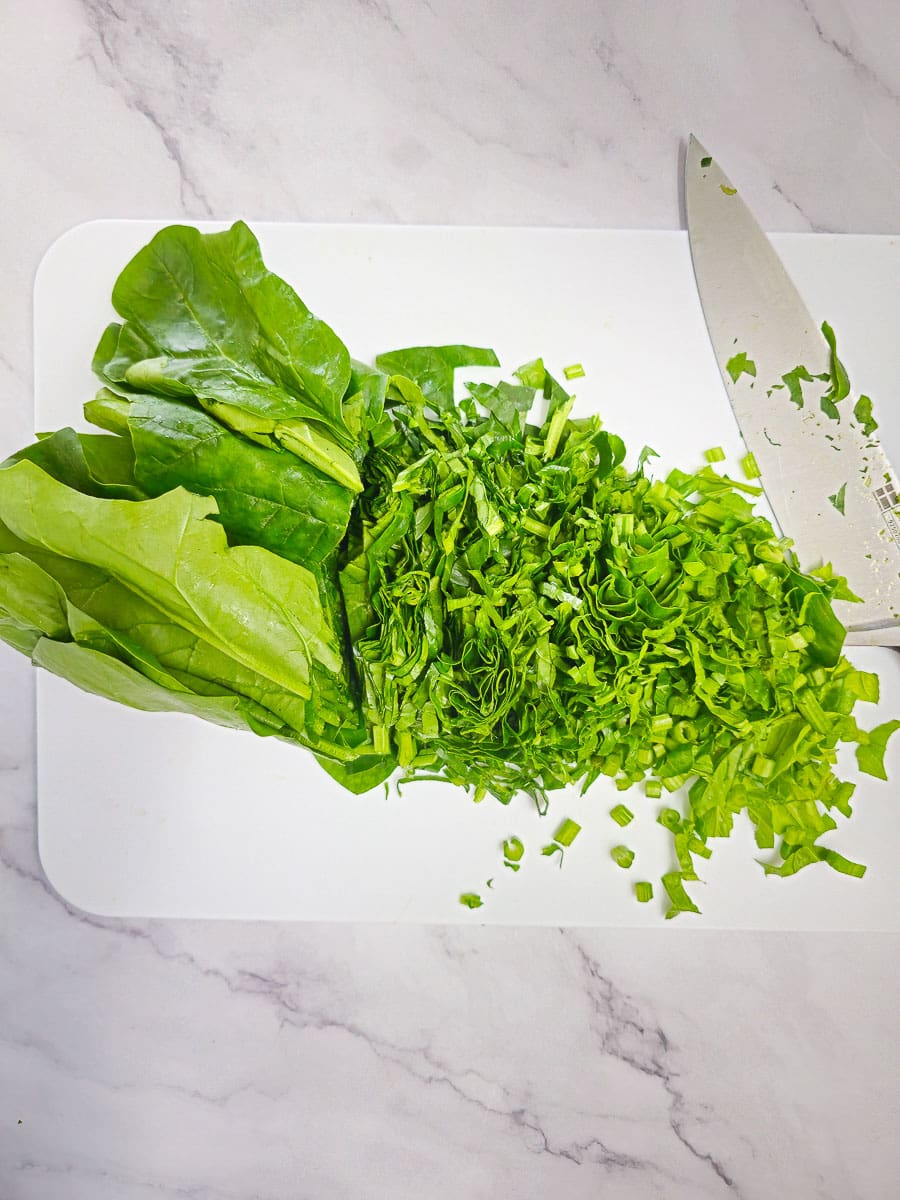
2. Shred English spinach finely.
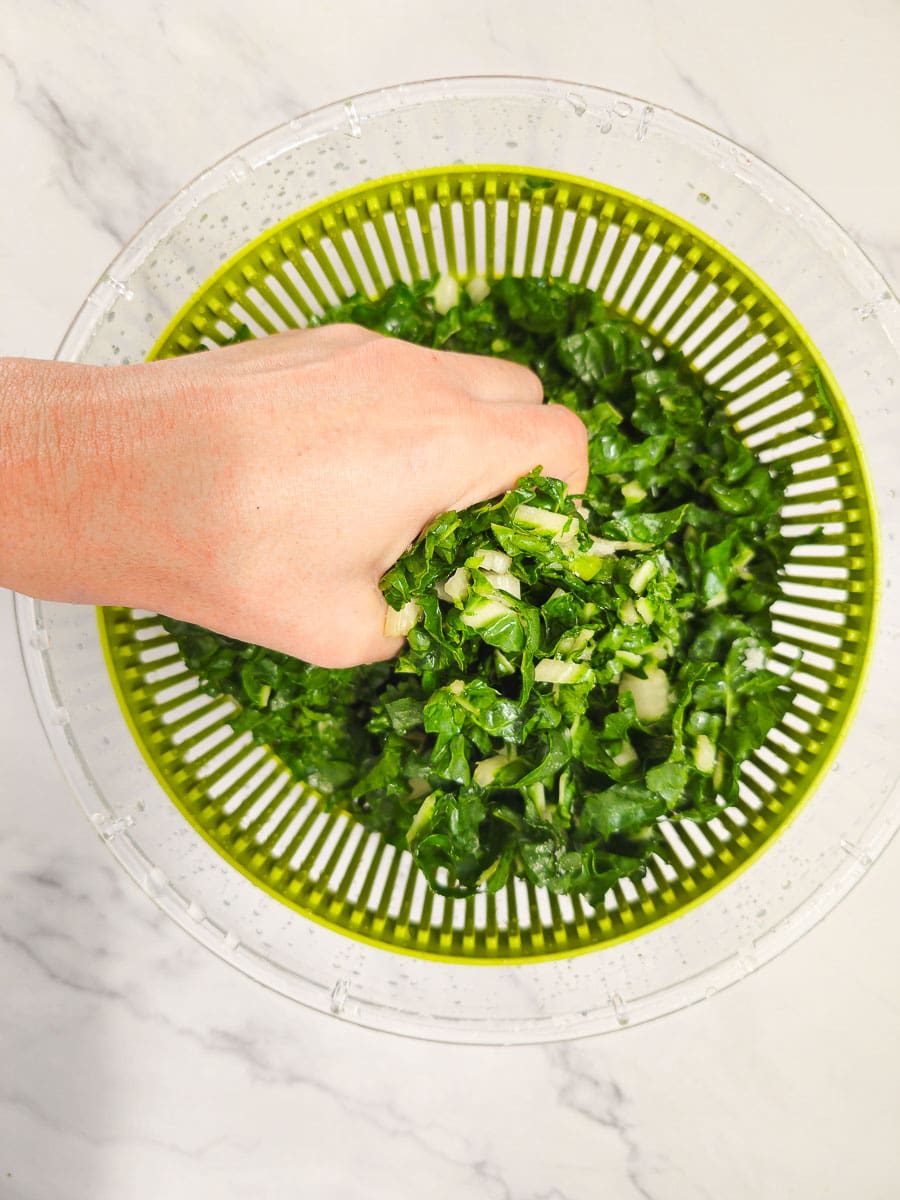
3. Wash silverbeet and spinach in a colander / salad spinner, then squeeze the leaves with salt to wilt it down slightly. Drain excess water using a colander / salad spinner.
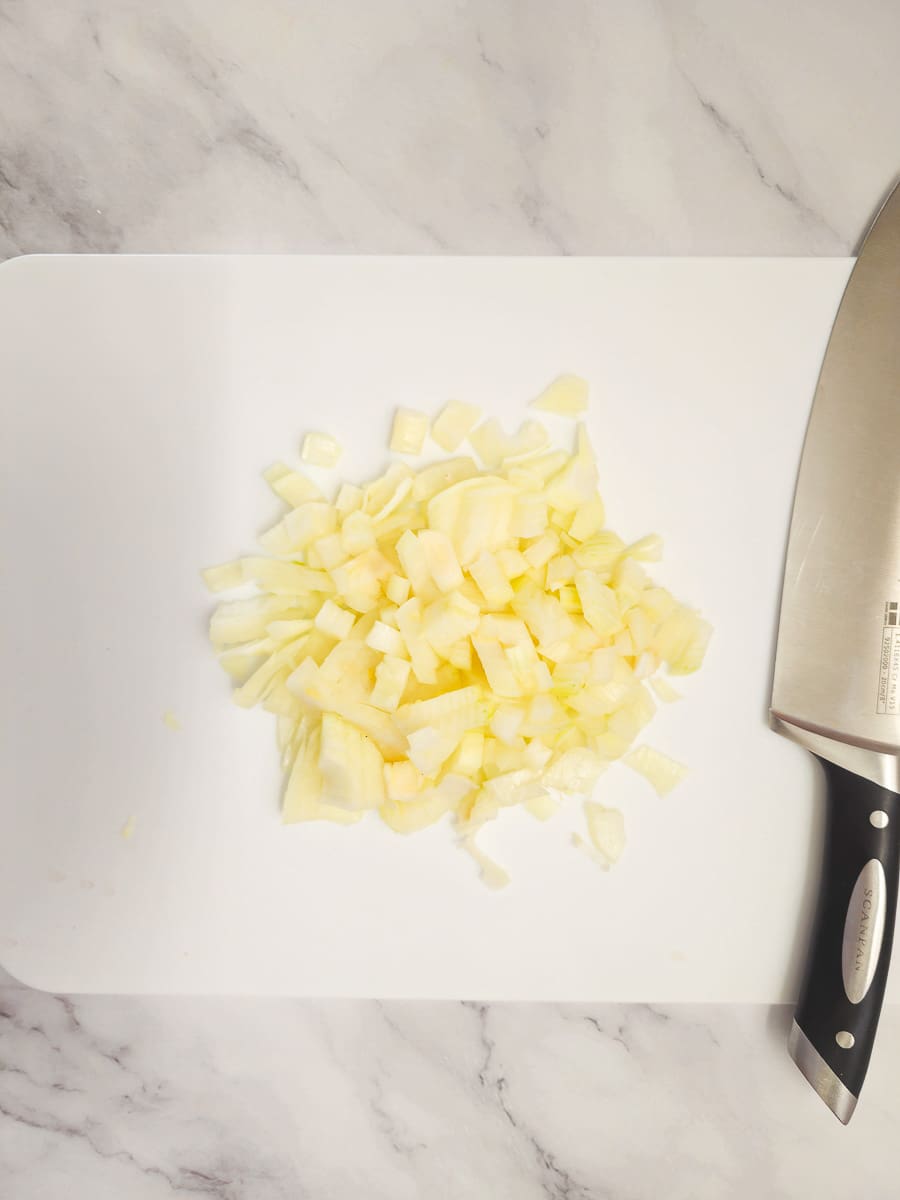
4. Dice onion.
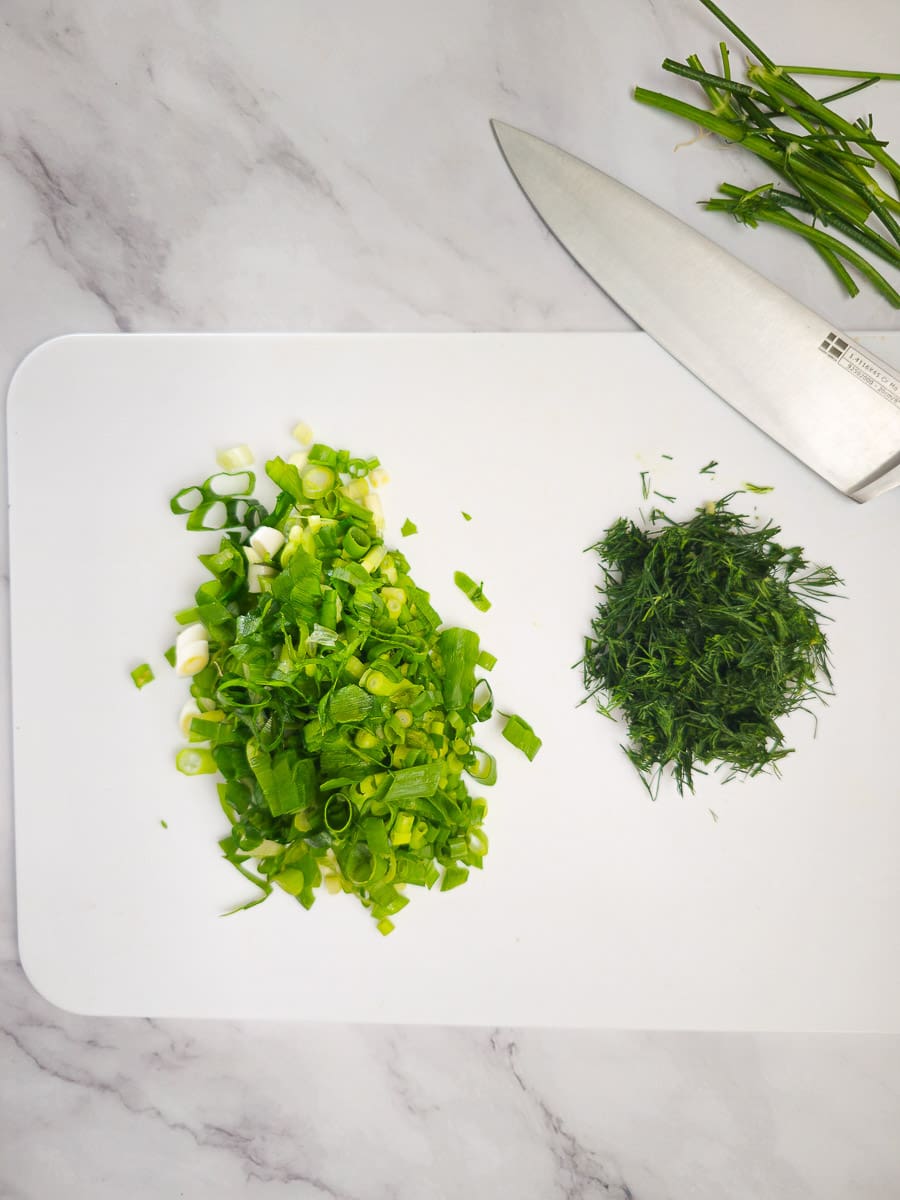
5. Thinly slice spring onions and dill.
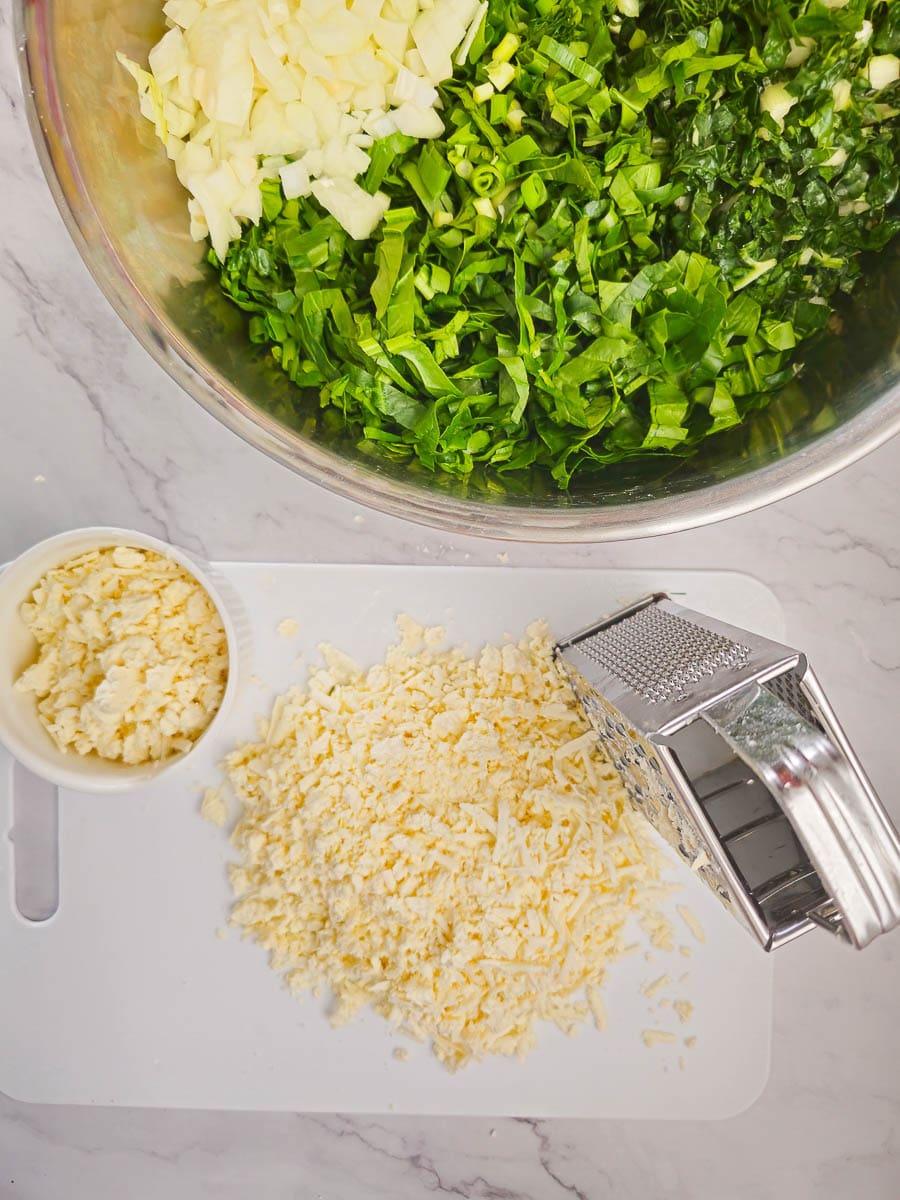
6. Grate or crumble feta cheese.
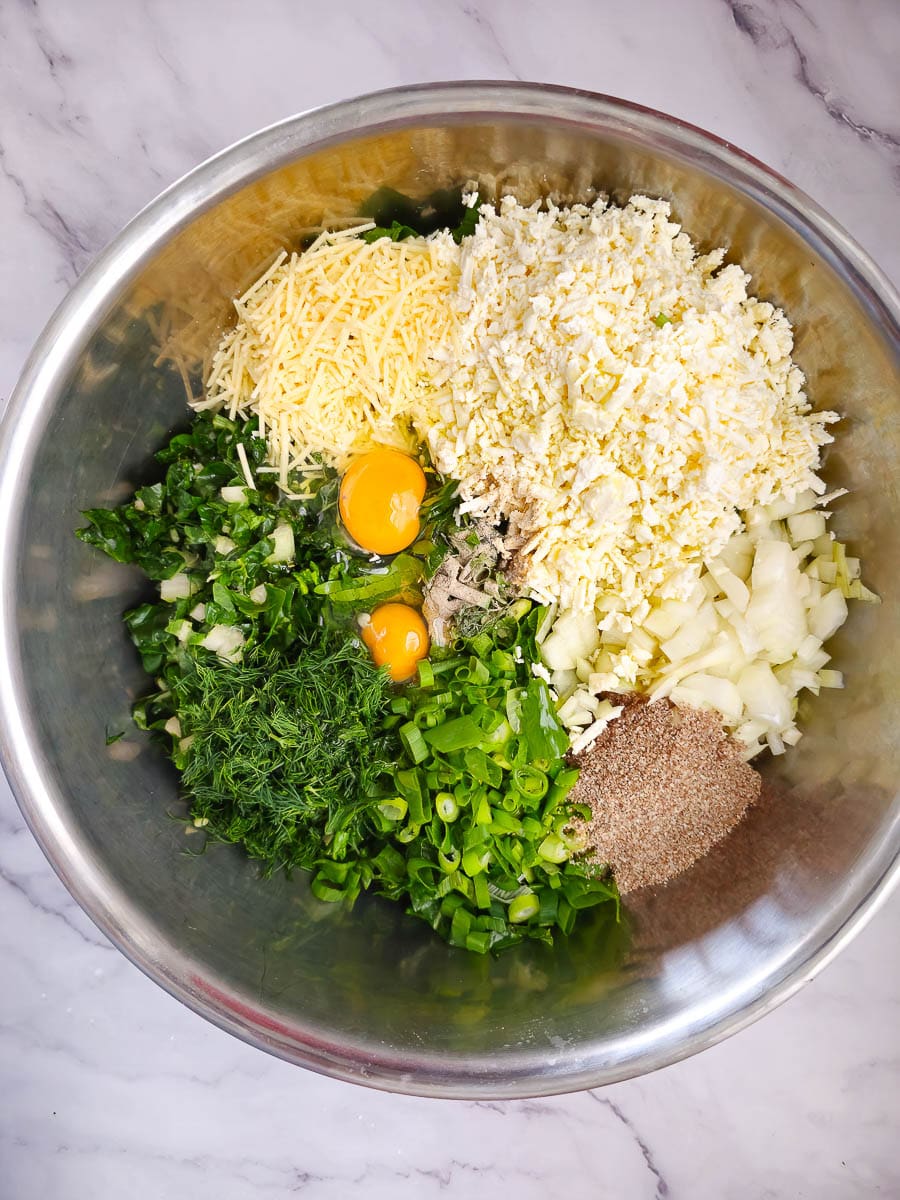
7. In a large bowl, combine the silverbeet, English spinach, onion, spring onions, dill, grated feta cheese, eggs, olive oil, parmesan cheese, burghul and pepper.
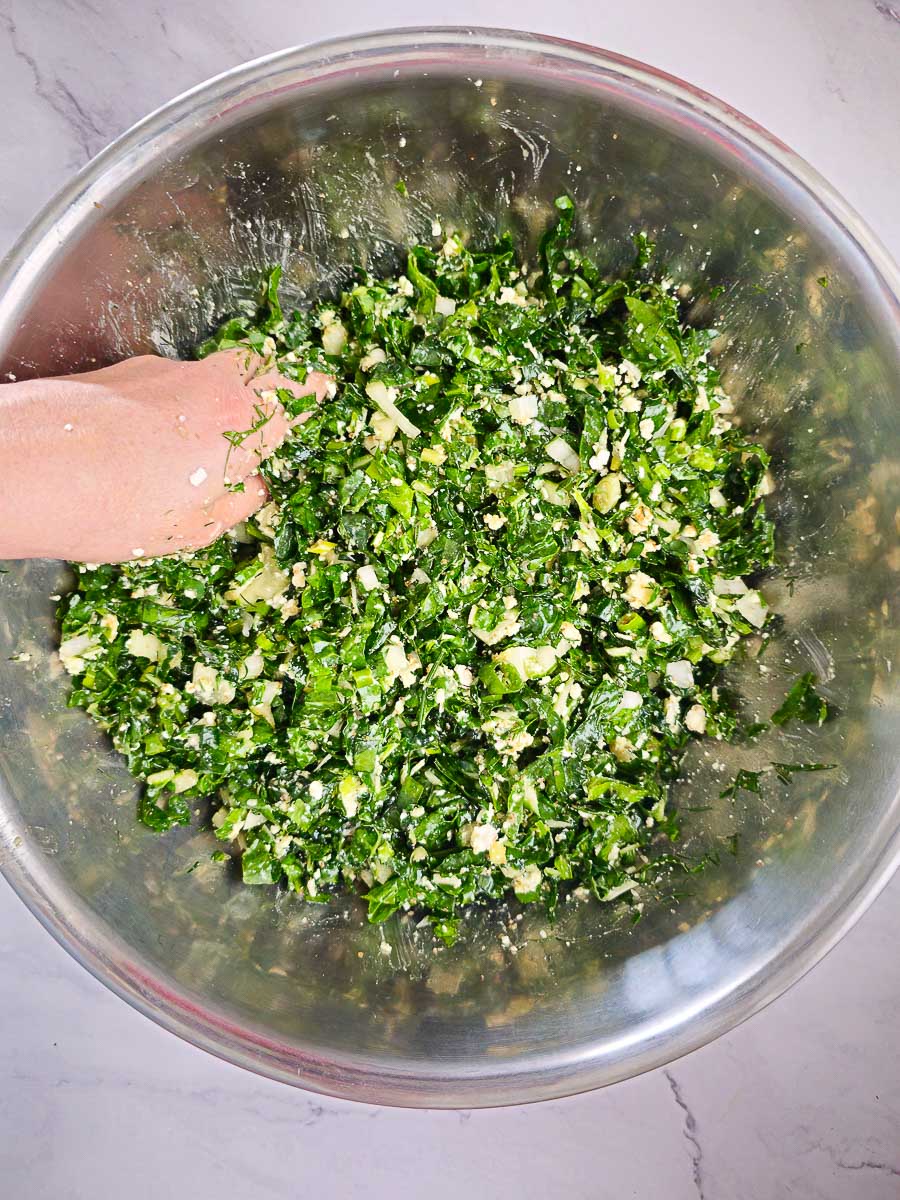
8. Mix well with your hands.
Assemble and bake
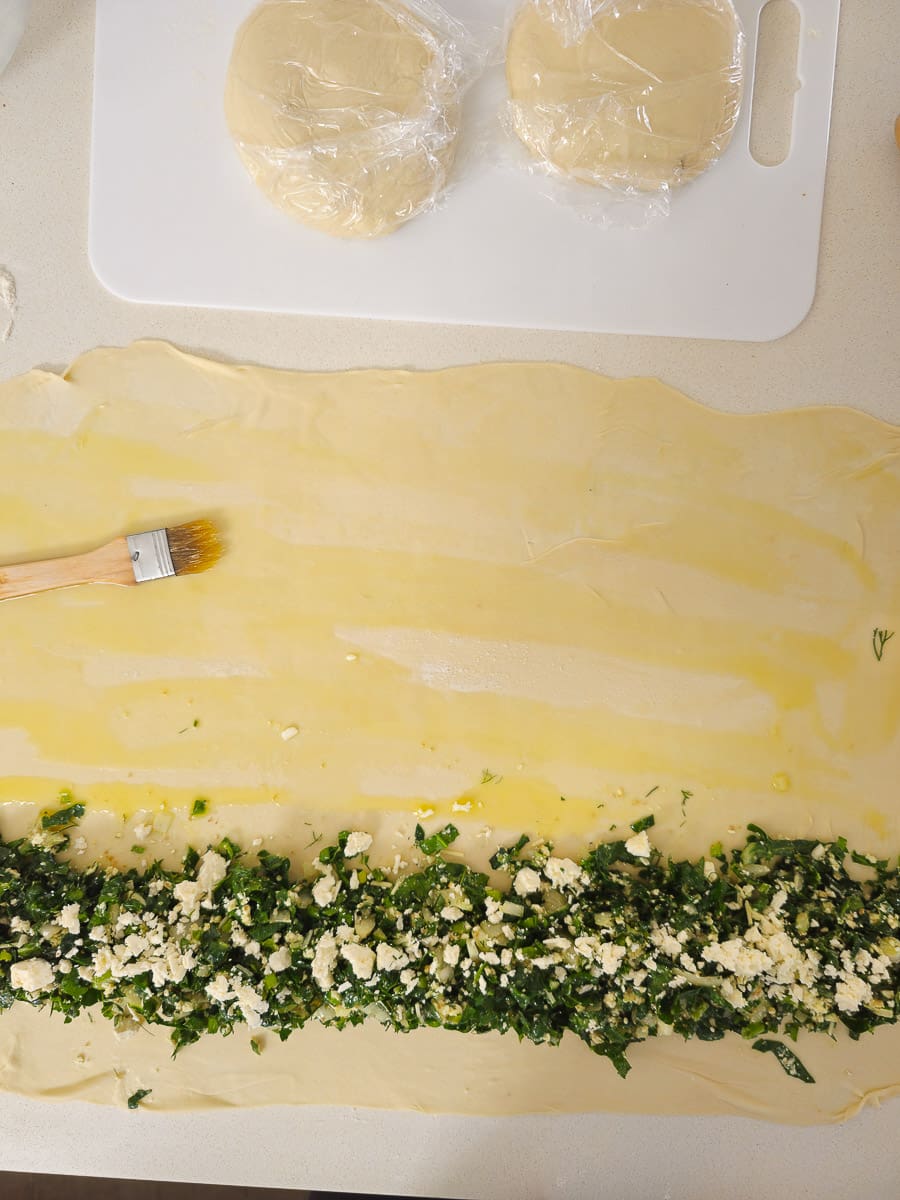
1. Place spinach filling along the long edge of pastry rectangle closest to you and crumble extra feta on top, if you wish. Drizzle and brush some oil on the pastry where there is no spinach.
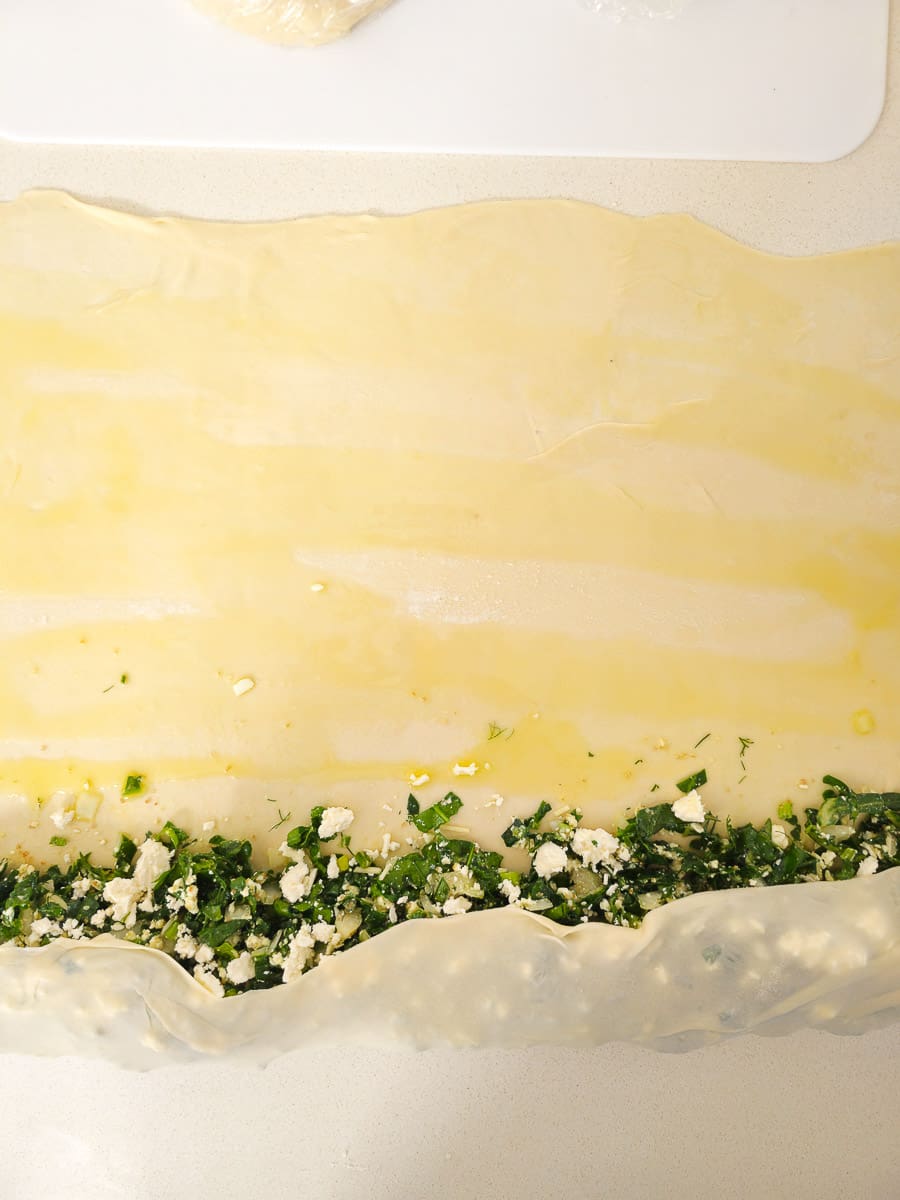
2. Roll the long edge of pastry over the spinach to resemble sausage rolls.
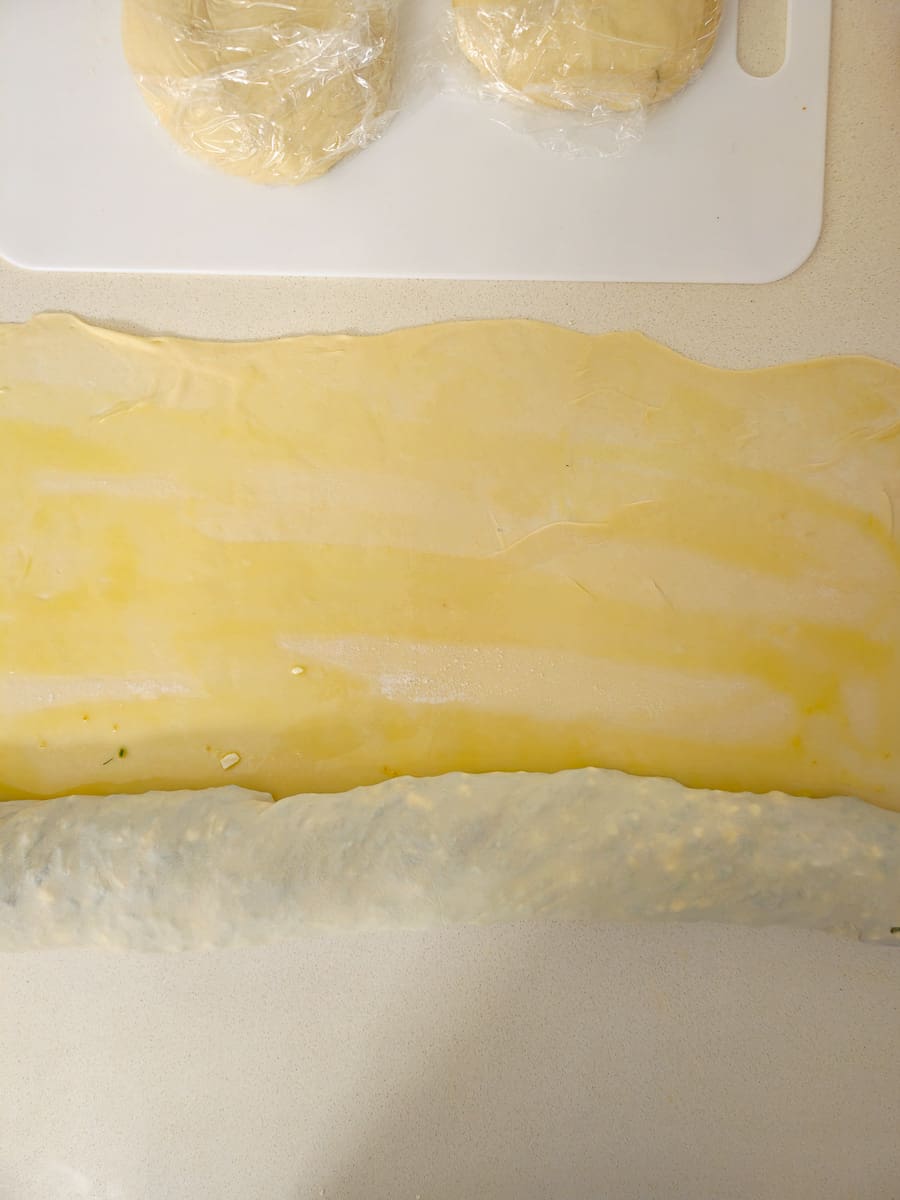
3. Roll about 4-5 times to create 2-3 layers of pastry. Enclose the edges.
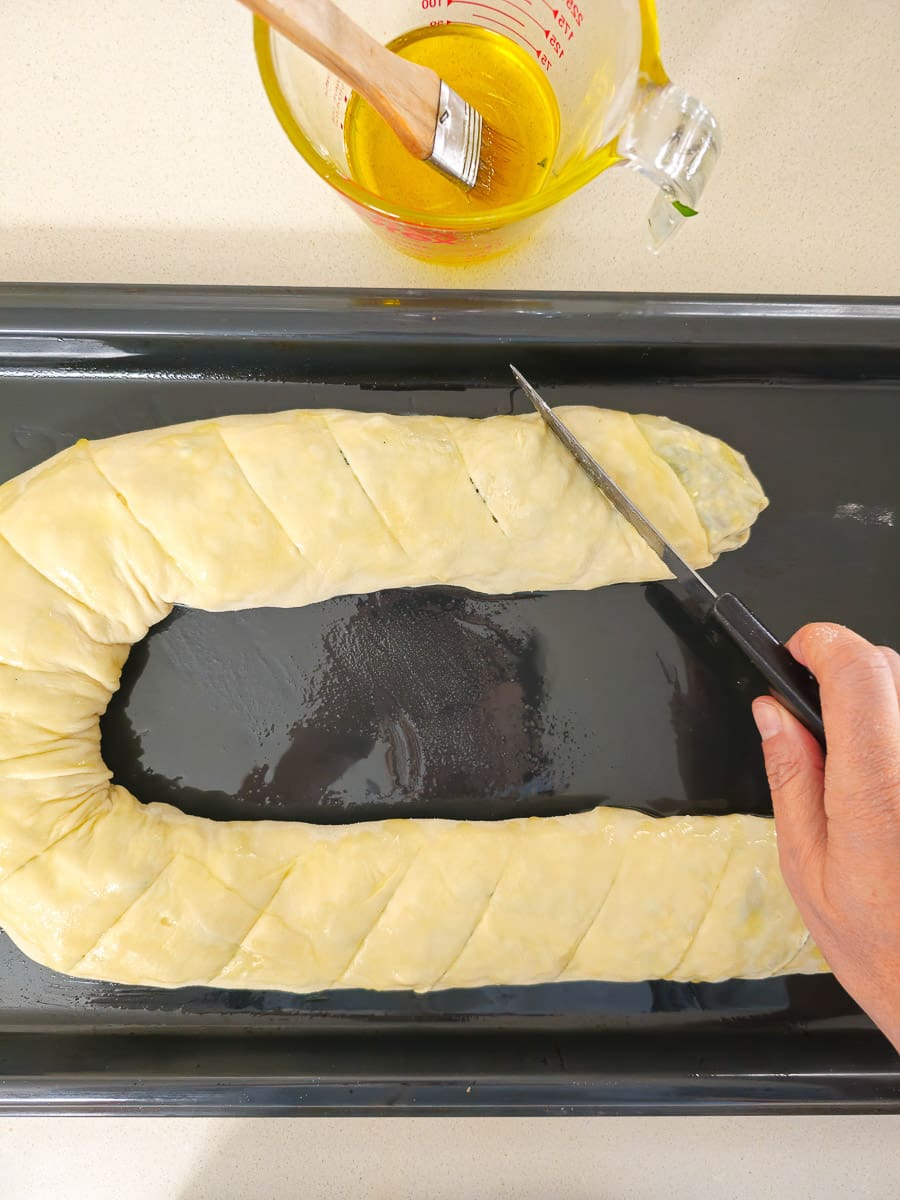
4. Brush the rolled pastry with oil and score pastry into even size serving pieces. Bake in moderate oven for approximately 35-45 minutes or until pastry is crisp and golden.

5. Once out of the oven and while still hot, flick droplets of water on top of the pastry with your fingers or a pastry brush.
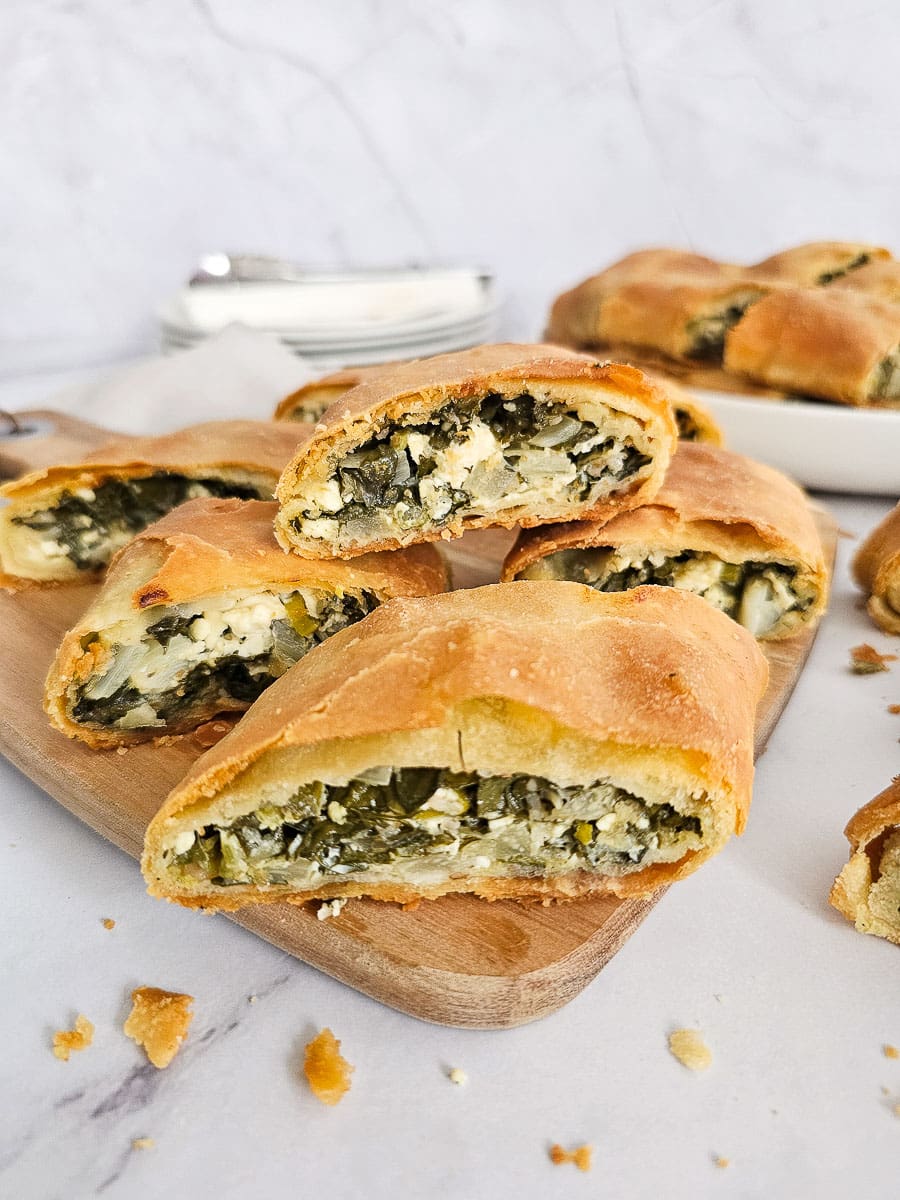
6. Allow to cool for 10-15 minutes to make it easier to cut into pieces.

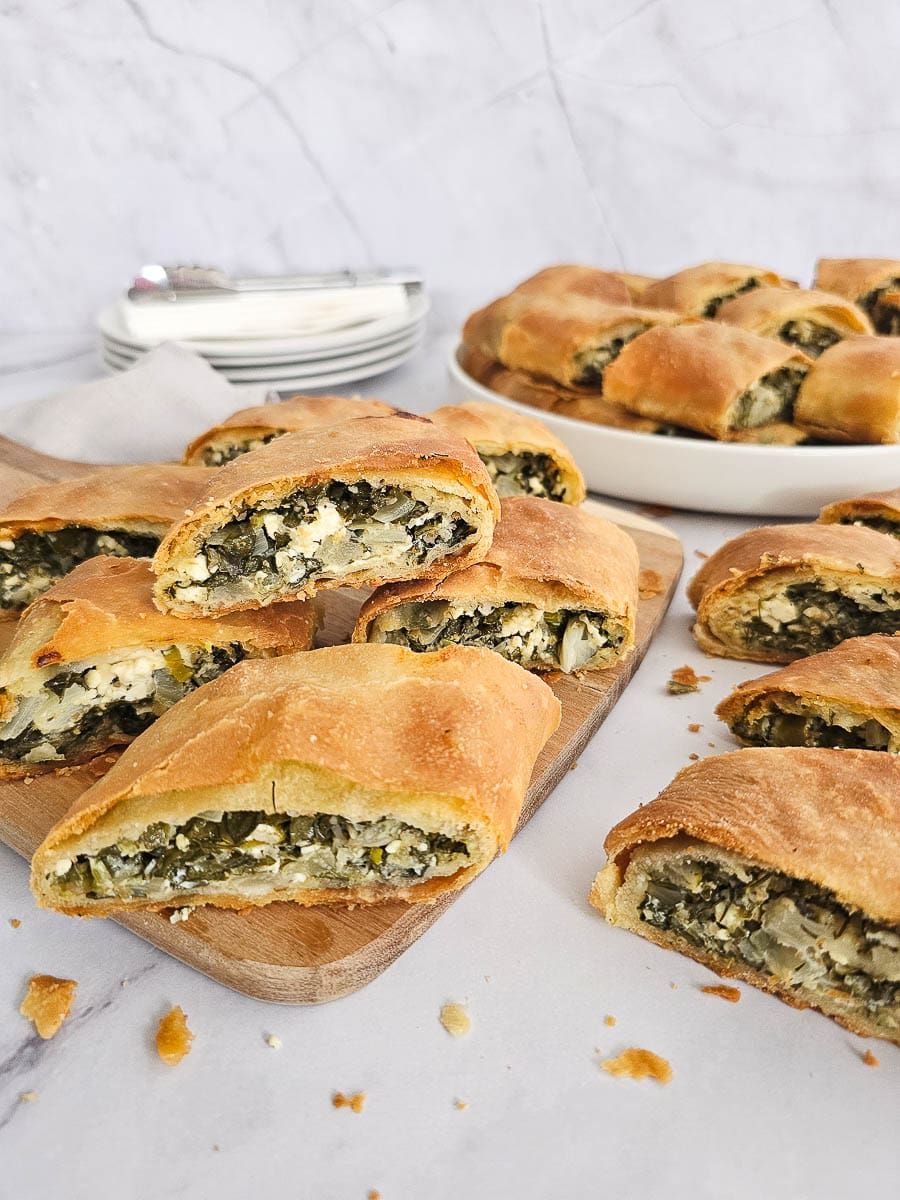
Spanakopita is often served as a side dish, so you might like to pair this dish with one of the following main meals:
- Eggplant, Potato and Tomato Casserole
- Greek Chickpea Soup (Revithia)
- Soutzoukakia (Greek Meatballs in Tomato Sauce)
Tips for making the Spanakopita pastry
Follow these tips to achieve a flaky pastry for your Spanakopita (Greek Spinach and Feta Pie).
Use Lukewarm Water: Lukewarm water activates the gluten in the flour more effectively, resulting in a dough that is easier to work with and yields a lighter, more tender pastry. Be sure the water is not too hot, as this can adversely affect the texture of the dough. As a guide, lukewarm water is approximately 38°C / 100°F.
Rest the Dough: Allowing the dough to rest after kneading is crucial. This rest period gives the dough elasticity, making it easier to roll out thinly without springing back, leading to flakier layers in the finished pastry.
Divide and Roll: Dividing the dough into smaller portions before rolling ensures more manageable pieces, reducing the risk of overworking the dough and creating tough pastry. Take your time when rolling each portion, aiming for a consistent thickness throughout for even baking.
Keep it Thin: If you can, roll your dough until it is paper-thin. If you develop any holes, gently press the edges together to patch it up rather than re-rolling, as this can create a tough pastry. Thin pastry creates delicate, crispy layers.
Use Extra Flour: While rolling out the pastry, use extra flour sparingly to prevent sticking. Too much flour can toughen the dough, so add just enough to keep it from sticking to your work surface and rolling pin.
Tips for making Spanakopita (Greek Spinach and Feta Pie)
Squeeze out excess water from silverbeet and spinach
Thoroughly squeeze out excess water from the spinach and silverbeet after washing and salting it. This step is crucial to prevent a soggy filling and ensures that your Spanakopita has a crisp texture. You could even use a clean kitchen towel or cheesecloth to squeeze out the excess moisture.
Add fine burghul to your filling mixture
For an even crispier Spanakopita, incorporate fine burghul into your filling mixture to soak up any remaining moisture from the spinach. This helps achieve a crispier Spanakopita. If you skip the burghul, make sure to strain the spinach well to remove excess moisture.
Don’t skimp on the olive oil
If there’s one thing I’ve learned when making Spanakopita, it’s that you don’t skimp on the olive oil. Trust me, I’ve tried to cut down on oil to reduce calories, but my family can always tell that I made it and not my mum. My mum’s Spanakopita is always crispier and more flavourful, as it has more olive oil. Everything in this recipe is super healthy, so there is no need to worry about using a little extra olive oil. Besides, olive oil is a staple of the Mediterranean diet, which has been ranked number one for seven years in a row.
Sprinkle baked Spanakopita with water
Sprinkling water on top of the filo pastry immediately after it comes out of the oven enhances the crispness of the outer layers while keeping the inner layers tender. The steam created by the moisture prevents the pastry from becoming too dry and brittle as it cools. Additionally, this technique makes the pastry easier to handle and cut without cracking.
Can I prepare this recipe ahead of time?
Yes, you can prepare this recipe ahead of time. Here are two ways to do it:
Prepare the Filling in Advance:
- You can make the filling the day before and store it in the fridge. This leaves just the pastry making and assembly of the Spanakopita for the next day.
Prepare Both the Filling and Pastry in Advance:
- You can prepare both the filling and the pastry the day before. Wrap the pastry in plastic wrap and store it in the fridge. You should take it out of the fridge and let it sit at room temperature for about 15-30 minutes before rolling so it is easier to roll.
To serve Spanakopita
Spanakopita is best served warm or at room temperature. However, it would help to let it cool for a few minutes before cutting into it to allow the filling to set.
Storage
Place in a sealed container and store in the refrigerator for 3-4 days.
To reheat Spanakopita
To reheat leftover Spanakopita, heat it in the oven at 180°C / 350°F for 10 to 15 minutes or until heated through. Alternatively, you can reheat it in the microwave for a minute or two, but this may result in a soggy crust.

